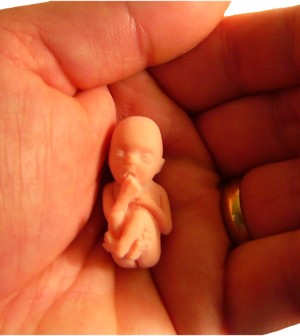- Navigating Your Midlife Crisis: Embracing New Possibilities
- City Raccoons Showing Signs of Domestication
- Mapping the Exposome: Science Broadens Focus to Environmental Disease Triggers
- One Week Less on Social Media Linked to Better Mental Health
- Your Brain Changes in Stages as You Age, Study Finds
- Some Suicide Victims Show No Typical Warning Signs, Study Finds
- ByHeart Formula Faces Lawsuits After Babies Sickened With Botulism
- Switch to Vegan Diet Could Cut Your Greenhouse Gas Emissions in Half
- Regular Bedtime Does Wonders for Blood Pressure
- Dining Alone Could Mean Worse Nutrition for Seniors
Headaches Often Strike Before Strokes in Kids: Study

Children are much more likely than adults to have a headache before an ischemic stroke, new research suggests.
An ischemic stroke is caused by a blocked blood vessel in the brain.
“Stroke should be considered as a possible diagnosis in any child with a headache and additional symptoms of weakness or numbness in the face, arm, or leg, or changes in walking, talking, or vision,” study author Dr. Lori Billinghurst said in an American Stroke Association news release.
“Urgent brain imaging may be required to distinguish a migraine with aura from a stroke,” Billinghurst added. She is a clinical assistant professor of neurology at the University of Pennsylvania and the Children’s Hospital of Philadelphia.
But stroke is extremely rare in children, affecting far less than 1 percent of kids from birth to age 18 each year, according to the stroke association.
The current study included 355 pediatric stroke patients. The children in the study were as young as less than 1 month of age, up until 18 years.
Forty-six percent of the children over age 3 when they had a stroke said they’d had a headache before the stroke. In children under 3, about 6 percent of youngsters reported a headache before their stroke. The researchers noted that kids under 3 may not have been able to report having a headache.
Headache incidence records were based on physician and patient reports of headache. No information on headache onset, length and treatment was available.
The study team noted that among those over the age of 3 when they had a stroke, half also had a headache whether or not their stroke was related to a blood vessel problem.
However, among those with a blood vessel problem — such as a tear or narrowing — the rate of headache before stroke rose to 7 in 10 patients, the study found.
The rate of headache was lower in kids whose stroke was related to blood vessel wall inflammation following a pre-stroke infection, cancer or serious medical condition. Roughly four in 10 of such children experienced a headache leading up to their stroke.
“It is possible that younger brains have blood vessels that are more easily distended and more likely to activate pain sensors that trigger headache,” Billinghurst suggested.
“It is also possible that inflammation — a powerful activator of pain sensors — may be more important in the processes underlying stroke in children than in adults,” she said.
But more research is needed before doctors could use headache incidence to help figure out the cause of a stroke after the fact, she said.
The study is to be presented Wednesday at the International Stroke Conference in Houston. Findings presented at meetings are generally viewed as preliminary until published in a peer-reviewed journal.
The study was funded by the U.S. National Institutes of Health.
More information
There’s more on strokes and children at the American Heart Association.
Source: HealthDay
Copyright © 2025 HealthDay. All rights reserved.










